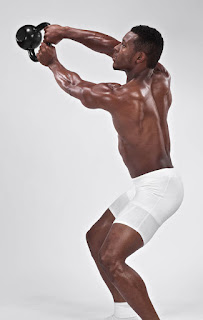Our country is becoming increasingly more overweight year after year. Many of us try diet after diet only to end up failing and becoming heavier in the long run. Our current economic state does not help at all because stress usually causes us to eat more. But what can we do? The bottom line is that something needs to change not only with your eating habits but with a little exercise. There is a brand new way of eating called calorie shifting in which you eat by alternating calorie types from meal to meal. This new calorie shifting diet has given people some extremely great results and best of all it is easy to use and follow.
Calorie Shifting Diet - How it works
The calorie shifting diet works by tricking your bodys metabolism. Let's take for example one of the previous low calorie diets that I am sure you have already tried. These diets made you consume less calories per day and therefore your body started to realize that you were almost at a point of starvation. So, what does the body do? It starts to conserve calories. That's why you lose some weight at the beginning of those diets but the weight loss slows down as you continue. Worse yet, you really are starving yourself and you feel like you have to cheat and eat something you like.
The calorie shifting diet works differently by eating different amounts of calories each day and alternating different types of calories such as proteins, then carbs, the back to proteins, etc. This keeps your bodys metabolism tricked or confused and adjusts to the different calorie intakes and keeps your metabolism going. By shifting calories, your body never feels like you are starving it and therefore it never starts to conserve fat and calories as it would with those other diets.
Shifting Calories - The Benefits
The benefits of using the calorie shifting diet are that you don't have to keep track of calories or read labels, and write down the foods you ate, etc. The other great benefit is that you get a meal plan that you have to follow, but you can eat the foods you want to eat. You get to choose from over 30 different foods for this meal plan. You also get to eat until you feel satisfied each time you eat a meal! No more feeling starved or the need to cheat.
This diet will also go over the types of drinks you should be
drinking and what else to do as far to increase your results. By using
this diet, you can lose up to 9 pounds in 11 days.
Article Source:
http://EzineArticles.com/expert/Sean_Frye/145725






